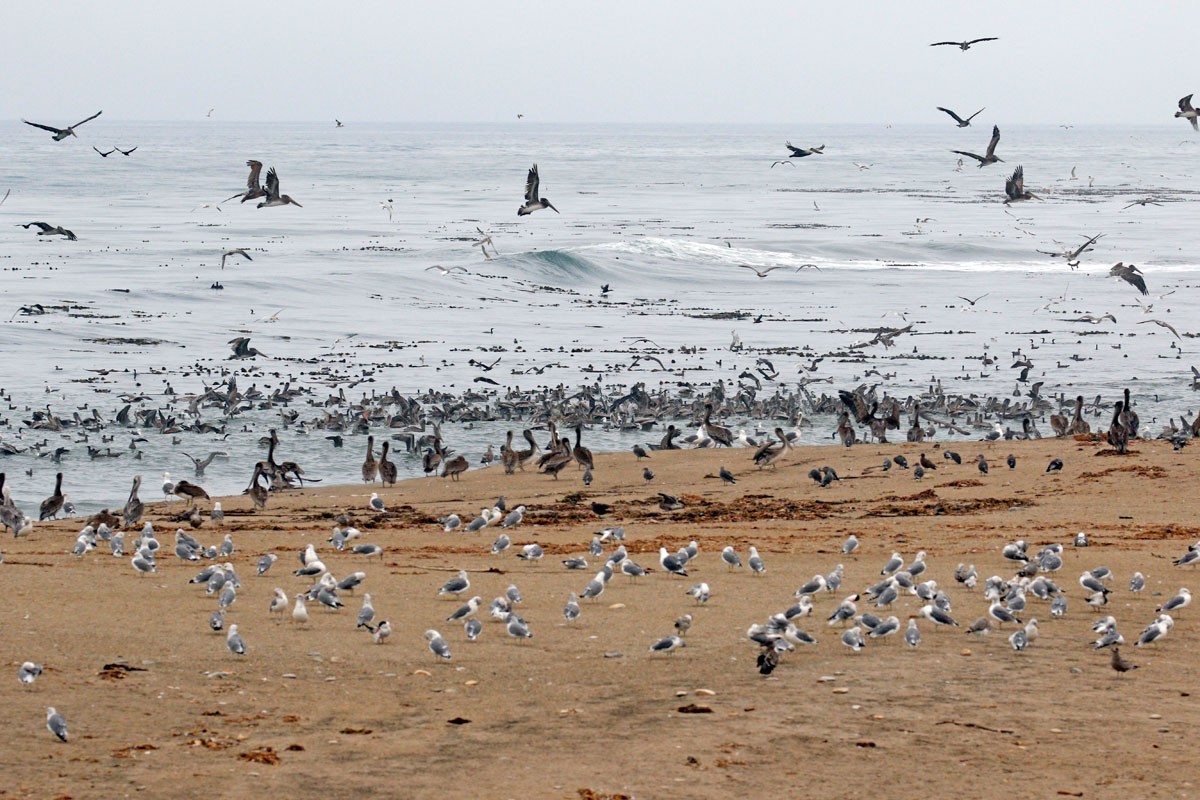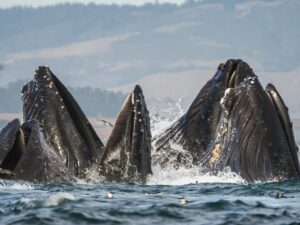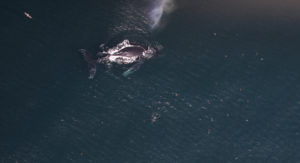Why are there so many birds on the beach at one time? What brings them all there?
Have you ever wondered why there are so many birds along our coastline in late summer? Have you ever been lucky enough to see the spectacle of thousands of birds converging on one spot, creating a “feeding frenzy”?
This occurs when a large school of baitfish comes near the surface and nearby birds quickly move in to take advantage of the easy pickings. This short-lived flurry of activity will last until the fish are eaten or have dispersed. A feeding frenzy may occur anywhere on the ocean, but sometimes it happens close enough to shore that we are able to watch this event unfold.
In early morning or late afternoon, the breakwaters at Pillar Point Harbor in Half Moon Bay and the nearby beaches are teeming with pelicans, terns, and gulls. They congregate by the thousands, seeking a safe place to roost during the night. This gives them a chance to rest and to dry and preen their feathers, which must be kept in tip-top condition in order to survive and thrive. There is safety in numbers and the chances of being picked off by a peregrine falcon or other predator are much lower when birds are in a large group. During the day, they must go to sea to feed, a short trip when they are lucky enough to find a school of fish close to shore.
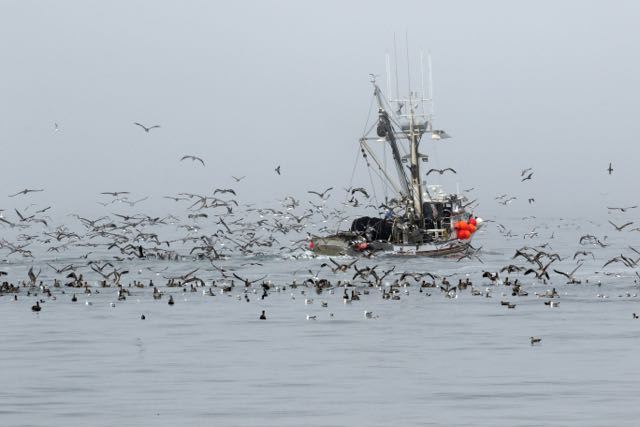
The development of a feeding frenzy may take place in a matter of minutes. Hundreds of birds fly in from all directions, then suddenly, flurry abounds, with pelicans and terns plunging headfirst from high above, while shearwaters, cormorants and murres dive from the water’s surface. Humpback whales and California sea lions often get in on the action, too, as well as our resident birds, including western gulls, common murres, and three species of cormorants. The frenzy may end just as fast as it began, as the birds and marine mammals go in search of the next meal.
In Half Moon Bay, and other Bay Area locations, this is a frequent sight during the months of August and early September. At this time of year, a large number of birds from Mexican waters migrate north at the end of their breeding season in search of more abundant food resources.
These birds include brown pelicans, elegant terns, and Heermann’s gulls, among other species that subsist on small fish. The timing of this influx of post-breeding birds coincides with the appearance of large schools of northern anchovy along our coastline. The anchovies themselves are the result of the immense productivity of our waters and the phytoplankton blooms they spur. (For more on the California current and upwelling, check out A Moveable Feast: The Ups and Downs of Coastal Upwelling.)
Sooty shearwaters also arrive off our coast in mid-to-late summer from their breeding grounds in New Zealand, completing the longest animal migration known at nearly 40,000 miles each year. Massive flocks, numbering in the tens of thousands or more make this journey in search of productive feeding grounds. Up to half a million birds may sometimes be seen from shore, appearing as a long, black cloud moving across the ocean. The only time these amazing birds come near shore is to nest, or occasionally to feed on schools of anchovy or squid when they come close to shore. The shearwaters spend all but a few weeks at sea, resting on the water or effortlessly gliding with the breeze, coming to land only to nest.
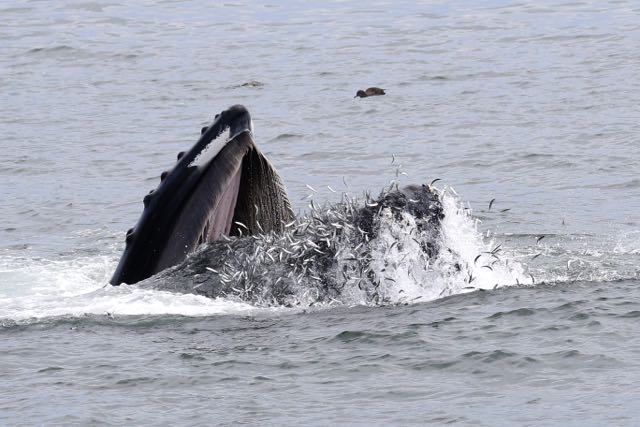
These feeding frenzies are a sign of success in efforts to protect our environment, and of the resilience of these species. Better regulations protecting our marine fisheries from overfishing have allowed fish populations to increase to healthier levels in recent years. Brown pelican populations, for example, were removed from the Endangered Species List in 2009 following a ban of the pesticide DDT in the early 1970s.
When I first moved to Half Moon Bay, more than twenty years ago, feeding frenzies were something we rarely saw, and certainly not in this magnitude. After a recent whale watching trip on Monterey Bay, I returned home from the long drive to find a traffic jam and dozens of people lining the bluffs by my local beach. It was a massive bird feeding frenzy with several humpback whales lunge feeding just 150 yards offshore. The best action of the day was right in my backyard! I love living in Half Moon Bay, where every trip to the beach promises something different and seeing a feeding frenzy is one of the highlights of late summer.
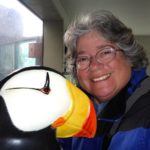
Donna Pomeroy has a BS in Wildlife Management from Humboldt State University. Now retired, she spends much of her time photographing wildlife and volunteering for Sequoia Audubon Society and the California Academy of Sciences intertidal monitoring project at Pillar Point. Donna is a long-time resident of Half Moon Bay.
Ask the Naturalist is a reader-funded bimonthly column with the California Center for Natural History that answers your questions about the natural world of the San Francisco Bay Area. Have a question for the naturalist? Fill out our question form or email us at atn at baynature.org!

